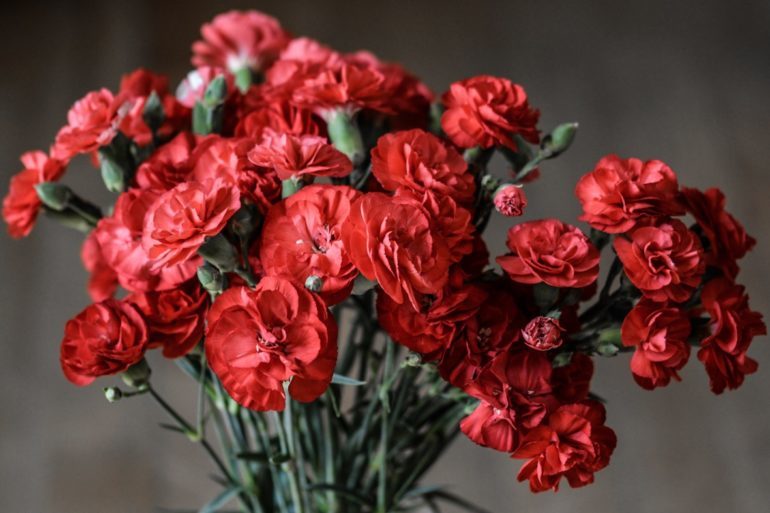The carnation has bright colors and a rich corolla with ruffled petals and is perfect for decorating gardens and balconies. Some species, in particular, have splendid blooms, cheerful, colorful and intense aromas that make the environment lively.
It is a native plant of the Mediterranean area and now spread all over the world in temperate areas, especially for ornamental use. Its diffusion has very ancient origins, so much so that its representations are found in Greek and Roman decorative art.
The carnation belongs to the caryophyllaceae family and its botanical name is Dianthus. We owe the scientific name of the flower to the doctor and naturalist Linnaeus: he wanted to combine the Greek words dìos – God – and annos – flower – to identify the “flower of the Gods”. A noble flower that is a symbol of virtue and deep feelings.
Other than flower of mourning events, then! In fact, carnation is often associated with homage to the dead, but its meaning is far from funeral. With their cheerful simplicity, carnations symbolize sincere affection and deep love for a loved one. It is also a very resistant plant, requires little care and also for this reason that it is often used to decorate the places where the deceased rest.
Each color of the corolla is then associated with a specific meaning: the white carnation is a symbol of eternal fidelity; the yellow carnation represents indecision and uncertainty; the pink carnation symbolizes affection and tenderness; the red carnation symbolizes passionate love or passion for any activity; mottled carnations represent kindness; the green carnation is the symbol of homosexual love.
As for traditions, the white carnation is always present at weddings: it is the flagship of the dress of the father of the bride and the male relatives of the spouses. In Japan, however, the intense red of the carnation indicates mourning because it is a color associated with the idea of hell.
Beautiful, colorful and strong, the carnation has a thousand-year history and there are many myths and legends that see it as protagonist. For example, in mythology it is the sacred flower of Diana, the goddess of the hunt. Legend has it that a shepherd fell madly in love with Diana, who however had made a vow of chastity. The Goddess nurtured false hopes of love in the young man and then abandoned him. Soon the man died desperate and white carnations bloomed from the tears he shed for his love.
The theme of tears and white carnations is also present in the Christian tradition. It is said that at the sight of Jesus on the cross, Our Lady of Sorrows wept so much that tears touched the ground: from the crying of Mary, white carnations with an intense perfume sprouted.
Even in history there are many stories related to this extraordinary flower. In 1270, during the Tunis crusade, a plague epidemic caused many victims among the soldiers of Louis IX, King of France. It was only thanks to a carnation distillate that the infection finally stopped.
Historical anecdotes also report that when Queen Marie Antoinette was imprisoned she continued to receive messages cleverly hidden in bouquets of carnations. Also in France, in the nineteenth century, the red carnation became the symbol that Napoleon used to decorate the ribbons of the Legion of Honor, while the nobles who were to be guillotined wore the white carnation in their buttonhole.
Beginning in the late 19th century, workers’ movements and socialist parties chose the red carnation as a symbol of their political ideas. In the Mediterranean area, Spain and the Principality of Monaco have chosen carnation as their national symbol. Finally, in Italy it is traditional that the carnation is the flower of San Pietro in Bologna and the flower of San Giovanni Battista in Rome.





